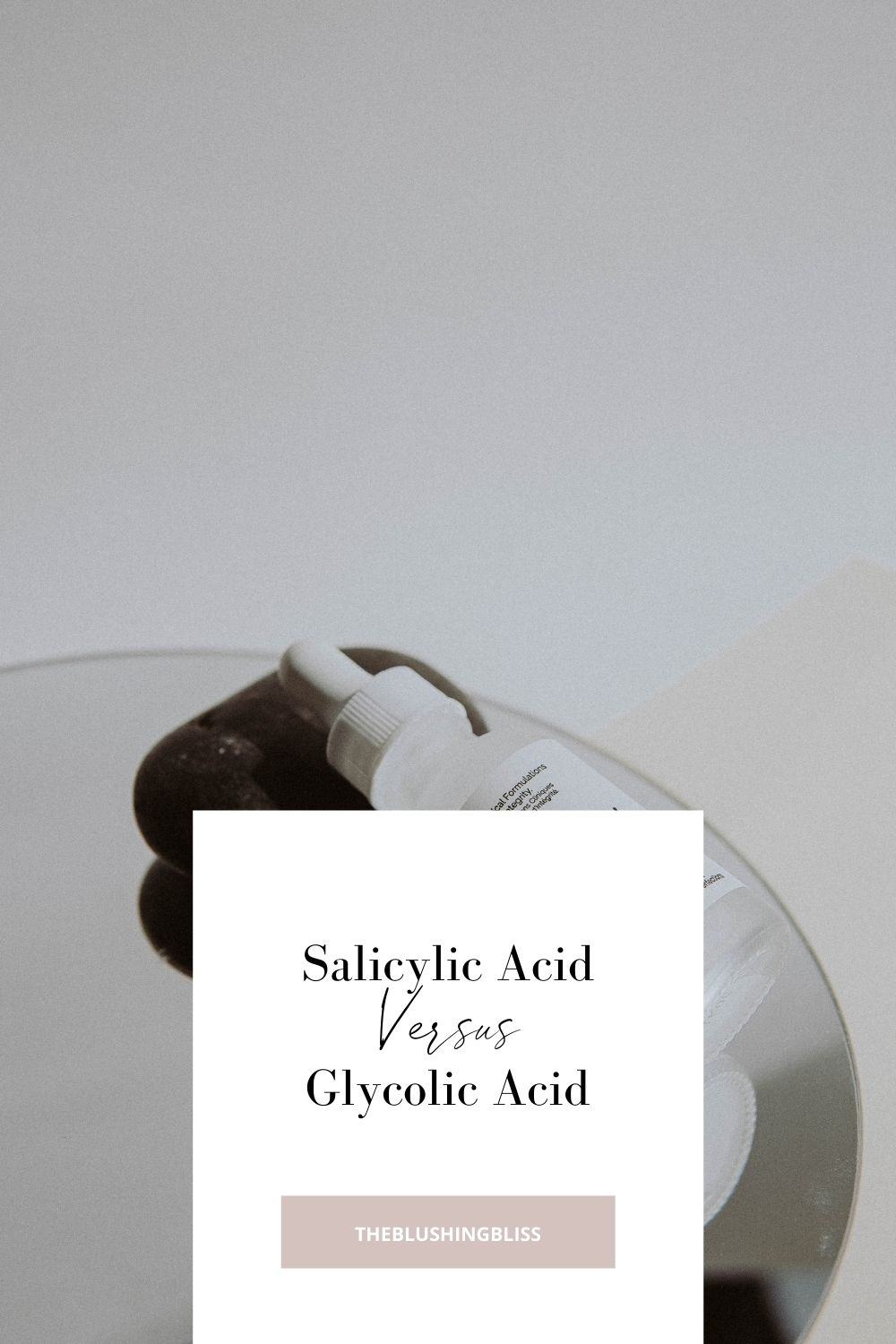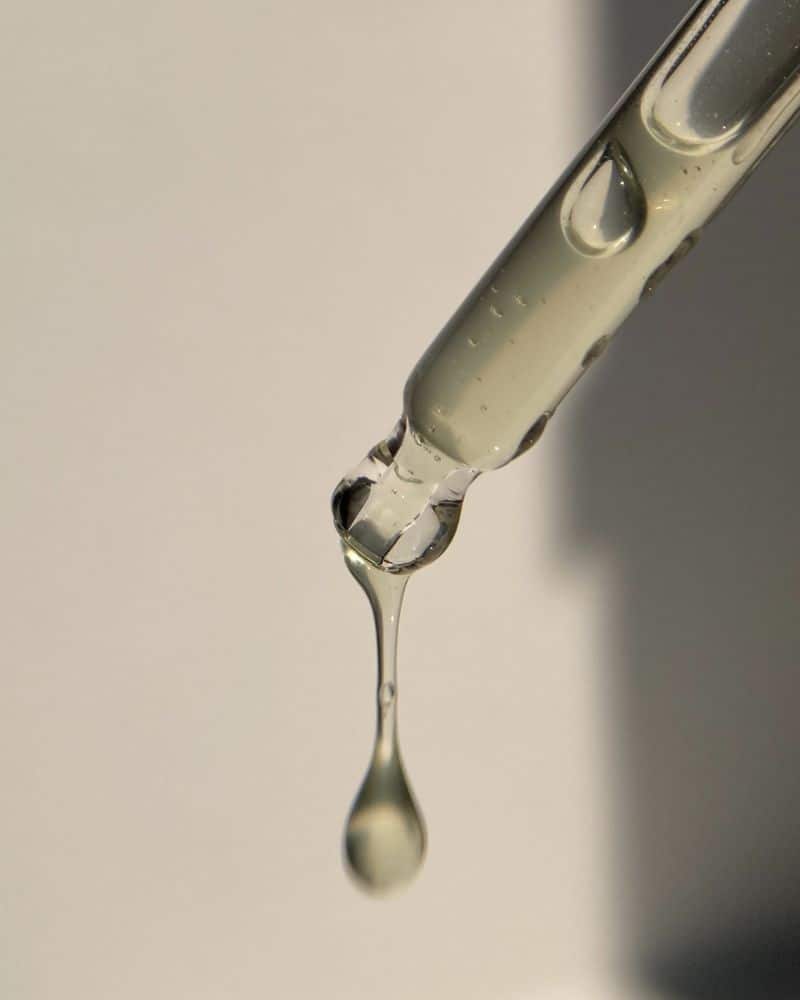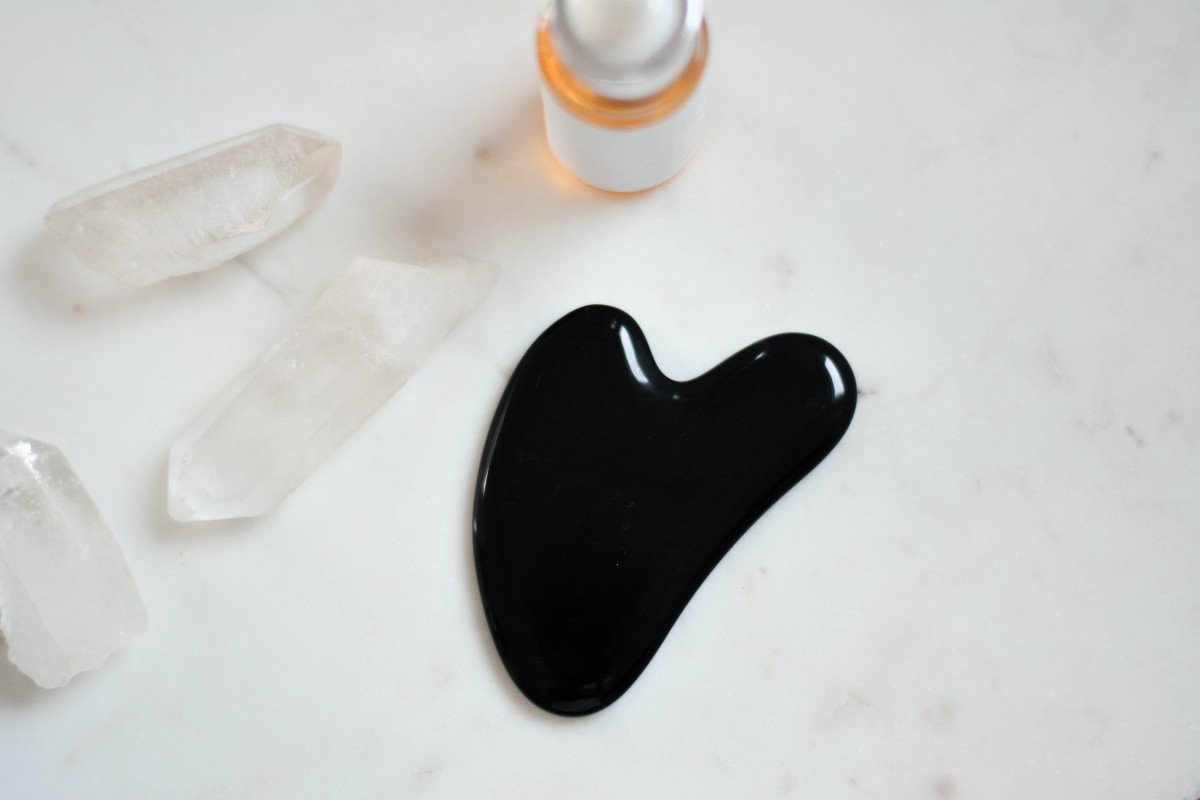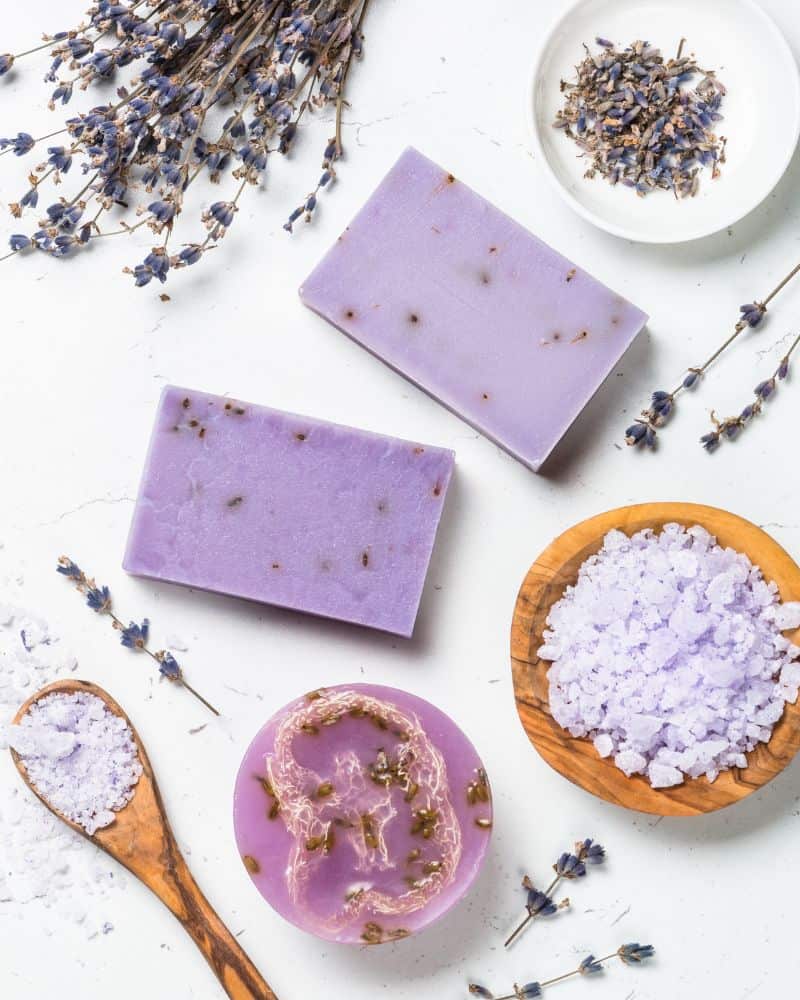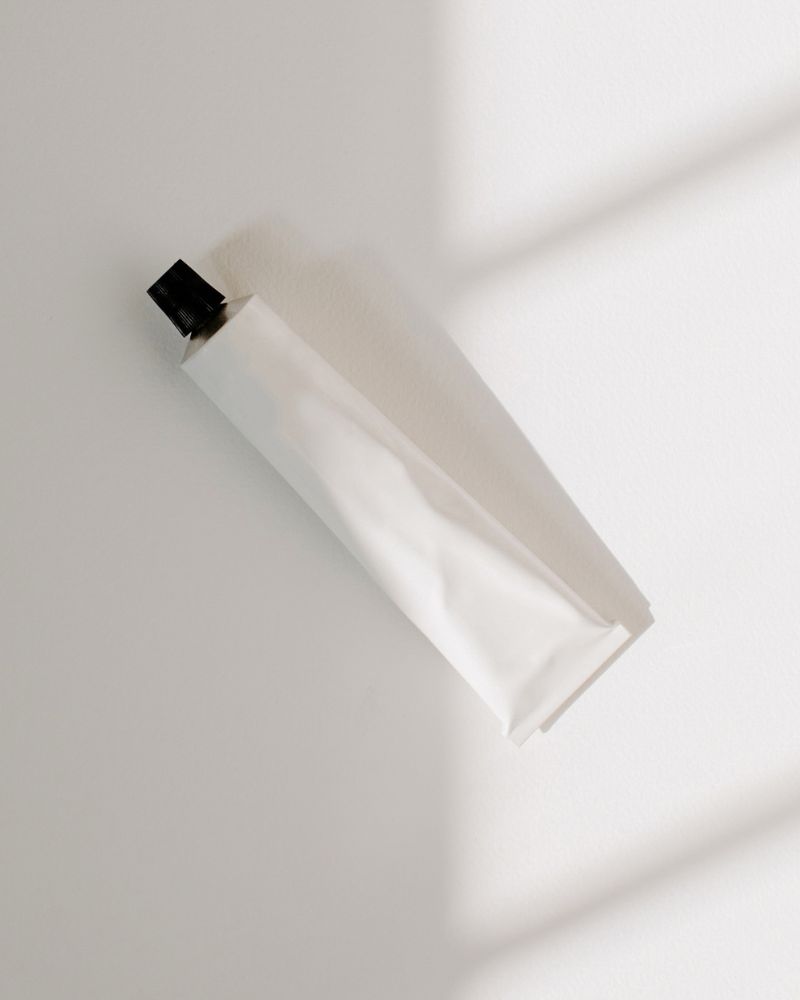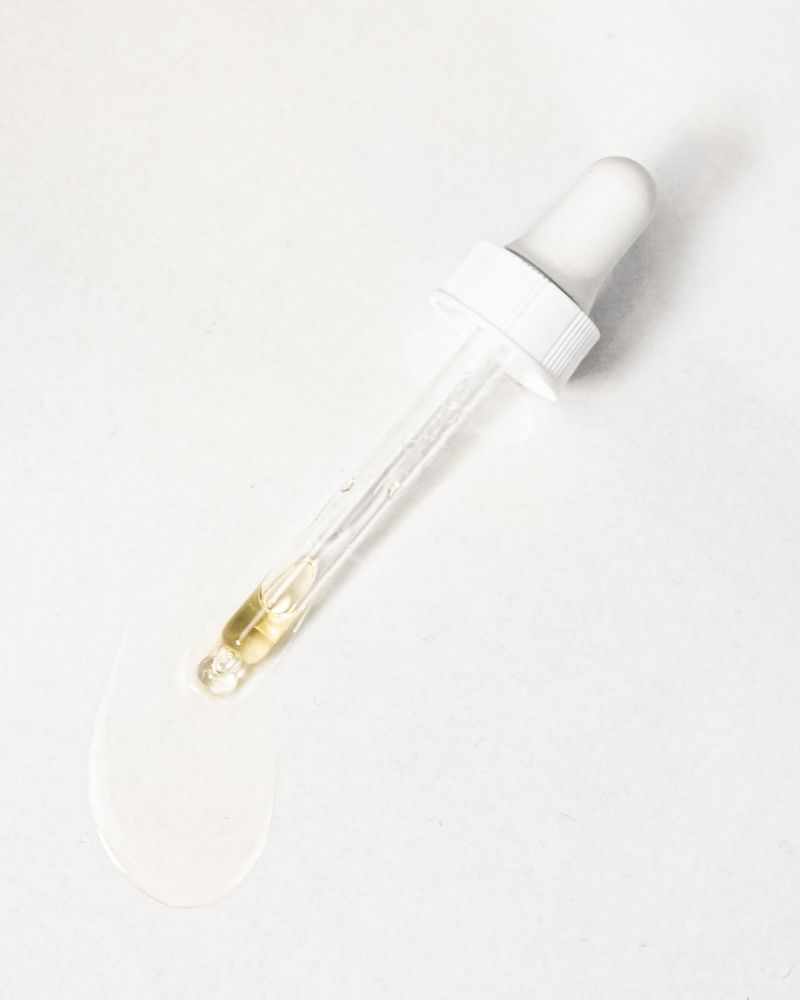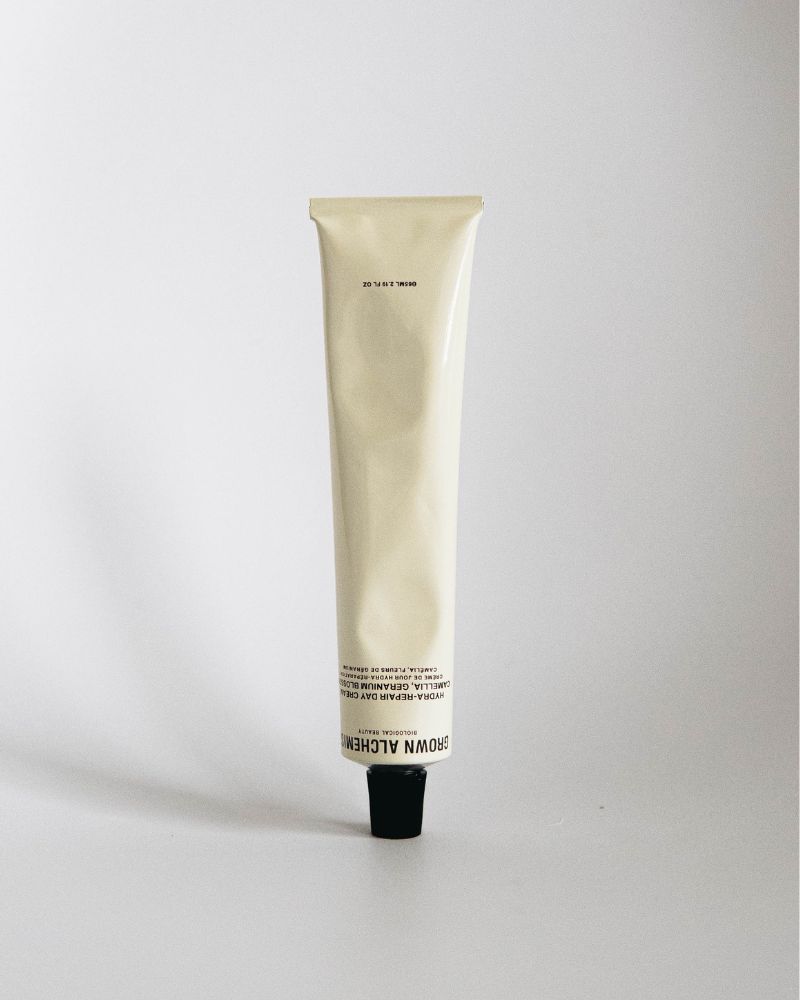Salicylic Acid Vs Glycolic Acid: What’s The Difference?
This post may contain affiliate links.
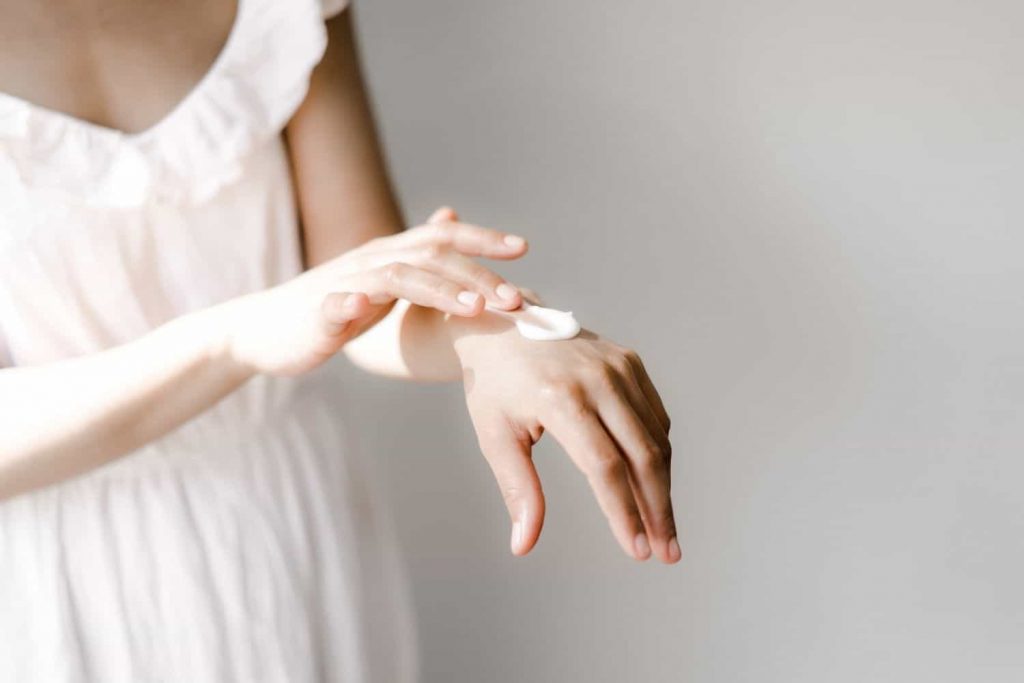
Salicylic Acid Vs Glycolic Acid: Which Is Better?
The skin is constantly renewing itself, with cells dying and new ones taking their place. But as we age, the process slows down. Wrinkles start to appear and our skin gets dryer. That’s where chemical exfoliants come in. They help remove dead cells that accumulate on the surface of your skin which can clog pores, cause acne, rough skin texture and dull skin. There are a few different types of exfoliants, but today we’re going to focus on the most popular two: Salicylic acid (BHA) and Glycolic Acid (AHA). You’ve probably seen them in skincare products but may not know exactly what they do. So today we’re comparing Salicylic acid Vs Glycolic acid and answering all your questions about the differences between the two.
Many people wonder “are glycolic acid and salicylic acid the same?” and while they sound very similar, they are very different. They do share some similarities in what they do (exfoliate the skin) but each have their own unique benefits that make them more appropriate for certain skin types of conditions.
What Is The Difference In Salicylic Acid And Glycolic Acid?
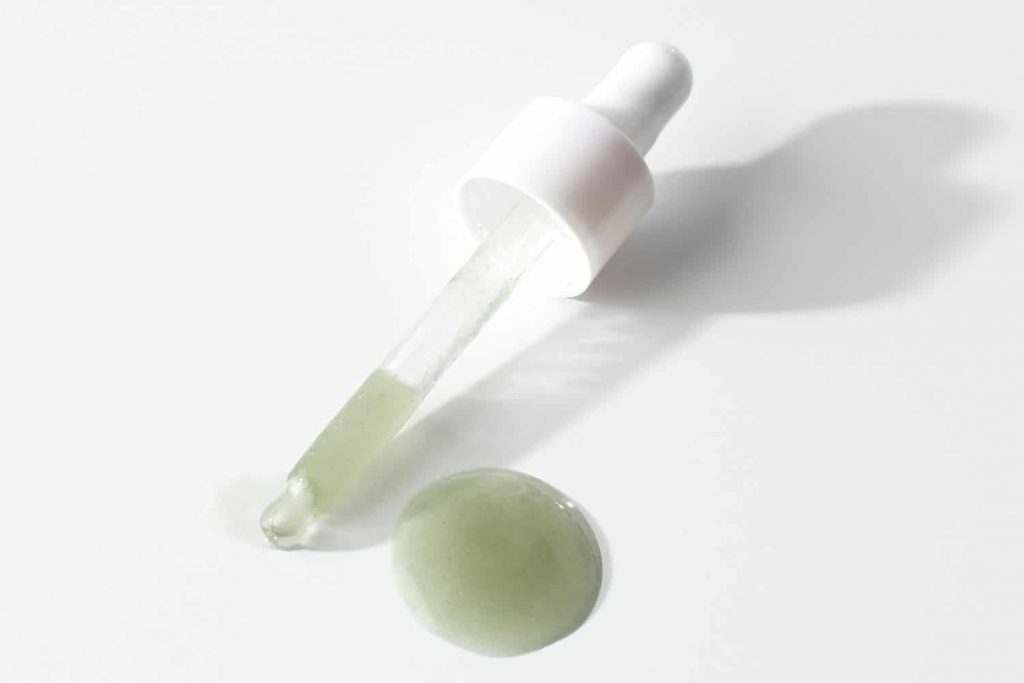
In order to compare Salicylic Acid Vs. Glycolic Acid, we’ll take a look at these chemical exfoliants individually and see what they do best, benefits and who should use them.
What Is Salicylic Acid (BHA)?
Salicylic Acid
BHA’s are oil soluble, meaning they can cut through the oil on the skin and penetrate deep into the pores to deeply exfoliate
Benefits: kills bacteria, regulates oil production, treats and prevents acne, minimized pores, smooths skin texture
Best for: oily skin and anyone that’s acne-prone
How Often To Use: can be used 2-3x a week or as often as everyday, depending on your skin
What To Look For: Salicylic acid, Betaine salicylate, Willow bark extract
Salicylic Acid (BHA) is a chemical exfoliant that can be found naturally in some plants such as willow bark. It’s an oil-soluble exfoliant which means it is able to penetrate your pores and clear away the stuff that’s clogging them up. This makes it great for those with acne, clogged pores, blackhead, sebaceous filaments and oily skin.
Salicylic acid works by loosening the attachments between cells, so they can be loosened and exfoliated away. BHA’s not only help remove dead skin cells, but also can travel deep into the pores to unclog them in a way that glycolic acid can’t.
Related post: Salicylic Acid And Hyaluronic Acid
Salicylic Acid Is:
- Anti-bacterial – kills acne causing bacteria to help treat and prevent acne
- Anti-inflammatory – reduces redness associated with breakouts, calms irritation and reduces inflammation in the skin (like cystic acne)
- Oil-soluble – cuts through oil to travel deep into the pores to kill bacteria, remove clogged pores and regulates oil production
Salicylic Acid Benefits:
- Treats active acne – salicylic acid works to decrease inflammation from pimples and helps heal active breakouts so they go away quicker
- Prevents acne – not only does BHA treat active acne, but it also kills acne causing bacteria and unclogs pores which prevent acne from forming in the first place
- Smooths skin – since salicylic acid helps to unclog pores, it also helps with textural issues like closed comedones and rough skin texture caused by dead skin cell build up
- Decreases oil production – BHA can help prevent your skin from producing excess oil
- Minimizes pores – since BHA removes all the gunk in your pores, they will appear smaller
Who Should Use Salicylic Acid
- Oily Skin – salicylic acid can regulate oil production which can help with shine and breakouts associated with excess oil. Since it’s oil soluble, it means it can cut through the oil on your skin and penetrate deeper into the skin that AHA’s
- Acne-Prone Skin – SA is anti-bacterial and anti-inflammatory so it’s the best choice for those with acne or other skin congestion issues. It works to kill acne causing bacteria in the pores and unclogs pores to treat active acne and prevent new acne from forming
- Large Pores – when pores are clogged, they appear larger, so keeping pores clear will help to minimize large pores. Since SA is great at removing impurities, it can help minimize the look of large pores
- Redness – SA is great for reducing redness, especially redness from pimples. Because of its anti-inflammatory properties, it can calm the inflammation and redness around zits
Related post: Azelaic Acid Vs Salicylic Acid
How To Use Salicylic Acid
Salicylic acid is pretty easy to introduce into your skincare routine. It comes in many different formulations and in different products. For example, you may have a salicylic acid cleanser or toner, salicylic acid pads or even a serum or moisturizer.
You can use salicylic acid daily or just a few times a week depending on your skin and skin concerns.
- Cleanse
- Salicylic Acid (wait 15-20 minutes)
- Moisturizer
If you use other products like toners or serums in your skincare routine, you’ll want to follow the thinnest to thickest rule. So if your salicylic acid product is thinner than your serum, you would use the salicylic acid first, then follow with the serum and moisturizer
What Is Glycolic Acid (AHA)?
Glycolic acid is an Alpha Hydroxy Acid that comes from sugar cane. It’s the smallest AHA which means it’s able to penetrate your skin easily to help with cell renewal and exfoliation. This makes it great for dry, dull skin, uneven texture, fine lines, wrinkles and sun damage.
Glycolic acid works by breaking up the bonds that hold skin cells together. When skin cells die, they sometimes want to stick around on the skin, which can cause a build up of dead skin. Glycolic acid works by breaking these bonds so they dead skin cells cannot hang on and effectively swept away, leaving smooth, radiant skin behind. Glycolic acid works on the surface of the skin, while salicylic acid works at a deeper level.
Glycolic Acid Is:
- Hydrating – AHA’s have humectant properties which means they help hydrate the skin
- Anti-bacterial – kills acne causing bacteria to help treat and prevent acne
- Collagen stimulating – by stimulating fibroblasts in the skin to produce collagen
Glycolic Acid Benefits:
- Brightens skin tone – as AHA speeds up cell turnover, it reveals new, healthy skin cells for a brighter complexion
- Fades hyperpigmentation – glycolic acid is known for its ability to fade hyperpigmentation like acne scarring, dark spots and sun spots
- Anti-aging – glycolic acid plumps skin to diminish fine lines and wrinkles and also helps to stimulate collagen production
- Smooths skin texture – AHA works to remove dead skin cell build up that causes rough skin, so it smooths out texture issues as well as any clogged pores
- Prevents acne – glycolic acid removes dead skin cell build up so they don’t get trapped in your pores and lead to acne
Who Should Use Glycolic Acid
- Hyperpigmentation – GA can help to fade hyperpigmentation by speeding up skin cell turnover.
- Dry Skin – since GA has humectant properties, it’s a great option for those with drier skin types. It can help to hydrate the skin, which is exactly what dry skin needs
- Fine Lines & Wrinkles – GA helps to reduce fine lines and wrinkles by exfoliating dead skin cells which can overtime help to smooth out any wrinkles or fine lines. Also since it is hydrating, it can help plump the skin which smooths out lines and wrinkles
- Rough Texture – Glycolic acid can smooth out rough skin texture from a buildup of dead skin cells by exfoliating away those dead skin cells, revealing smoother and healthier skin
How To Use Glycolic Acid
Glycolic acid should only be used during the day because sunlight can degrade the product and cause it to become ineffective. Glycolic acid also makes your skin more sensitive to the sun, so you should always minimize sun exposure and use sunscreen when using glycolic acid.
Like salicylic acid, glycolic acid also comes in many different forms. Luckily, it’s pretty easy to incorporate into your routine as well.
- Cleanse
- Glycolic Acid
- Moisturizer
Salicylic Acid Vs Glycolic Acid pH
Any kind of “active” in skincare has an optimal pH in which it works best at. Salicylic acid and glycolic acid are considered actives because they immediately act on the skin on contact. They do have a specific pH range that they work best at. Outside this range, the product may not be as effective.
- Salicylic Acid pH 3-4
- Glycolic Acid pH 3-4
Both salicylic acid and glycolic acid have an optimal pH of 3.0-4.0. This means in order for them to work their best, the pH of the product they are in to be in this range.
Some actives have a lower or higher pH range.
Salicylic Acid Vs Glycolic Acid For Skin
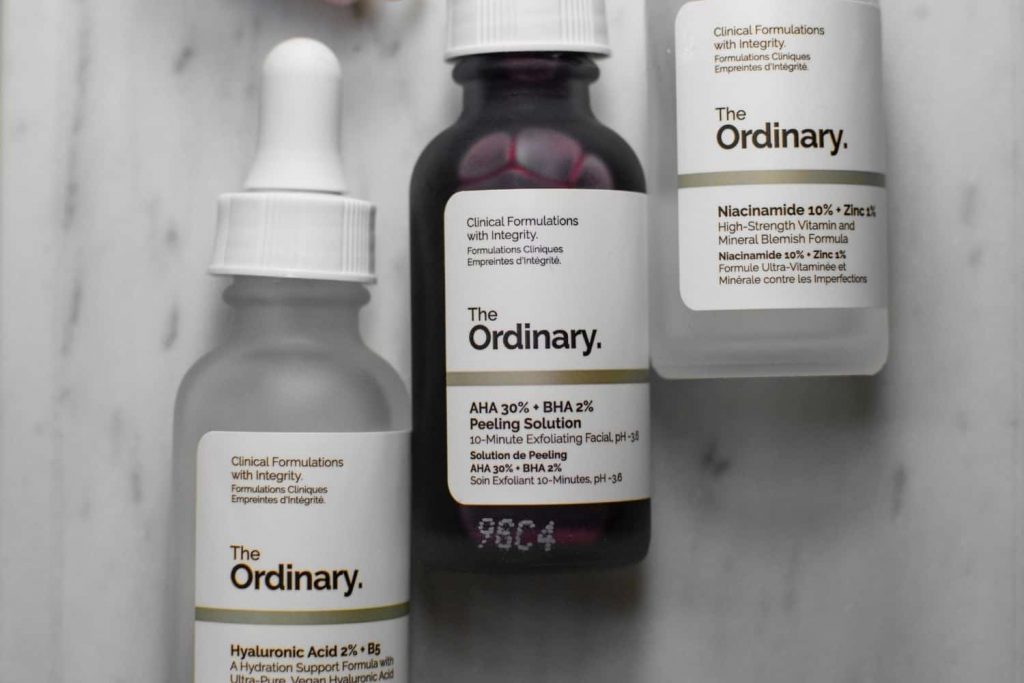
Now that we’ve gone over the major differences between bha vs aha, let’s take a look at which one is best to use for certain skin conditions.
Salicylic Acid Vs Glycolic Acid For Skin Types
Both glycolic acid and salicylic acid are great options for those with acne-prone skin because they can help to clear pores. Out of the two, BHA is best for those with acne, blackheads or oily skin.
For people with dry skin, AHA will be the way to go because of the hydrating properties of AHA’s.
For those with sensitive skin, AHA’s like lactic or mandelic acid or PHA’s will be best as they are larger in size and therefore more gentle.
Salicylic Acid Vs Glycolic Acid For Acne
Salicylic Acid is best to use for acne because BHAs are oil soluble meaning it can penetrate sebum filled pores more deeply than AHA’s and reduce clogged pores that can lead to acne. Although AHA’s are also antibacterial and can help prevent dead skin cells from clogging up your pores, it’s also a great choice for acne. In some cases, you may need both AHA and BHA to get rid of acne completely. But if you want to stick with just one, go with the BHA. You can always add the AHA in your routine later if you need a little more acne-fighting (we all know how tough acne can be!).
Related post: Does Salicylic Acid Cause Skin Purging
Salicylic Acid Vs Glycolic Acid For Blackheads
Salicylic acid, or BHA is the best option for blackheads, clogged pores or sebaceous filaments. Because salicylic acid can travel deep into the pore and remove any impurities, it can unclog blackheads and prevent them from forming in the first place.
Salicylic Acid Vs Glycolic Acid for Hyperpigmentation
Is glycolic acid or salicylic acid better for dark spots? Glycolic acid is best for hyperpigmentation, sun spots and acne scarring. AHA’s are known for their ability to work on the surface of the skin and therefore help with fading hyperpigmentation.
Salicylic Acid Vs Glycolic Acid For Keratosis Pilaris
Is AHA or BHA better for treating chicken skin? For those with keratosis pilaris, an AHA like glycolic acid will be the best option because it breaks down the bonds in skin that causes dead cells to stick together. However, BHA can be helpful to cut through the oil on the skin and travel deep into the pores and hair follicles to unclog. If you really want to tackle Keratosis Pilaris, use both AHA and BHA.
Salicylic Acid Vs Glycolic Acid For Ingrown Hairs
Both! Use a product with AHA and BHA to tackle dead skin and bacteria that contribute to ingrown hairs.
Salicylic Acid Vs Glycolic Acid For Closed Comedones
Closed comedones are also known as whiteheads, and they’re where a clog has formed underneath the skin’s surface. This clog doesn’t lead to a pimple with a head, but it may turn into acne over time if not treated. For closed comedones, or skin colored bumps, salicylic acid will work best because it can travel deep into the pore to clear it out.
Salicylic Acid Vs Glycolic Acid: Similarities & Differences
Salicylic Acid
Glycolic Acid
So as you can see, glycolic acid and salicylic acid are very different. Although they’re both types of chemical exfoliants, they both work in different ways and they also both have very different properties which target very different skin concerns.
Related post: What To Use To Exfoliate Underarms
Is Glycolic Acid Better Than Salicylic Acid?
One is not better than the other, but one will give better results depending on your skin type and skin concerns. Although they are both chemical exfoliants, BHA’s are better at targeting certain things like acne, blackheads and oily skin, while AHA’s are better at fading hyperpigmentation, anti-aging and skin texture.
Can I Use Glycolic Acid And Salicylic Acid Together?
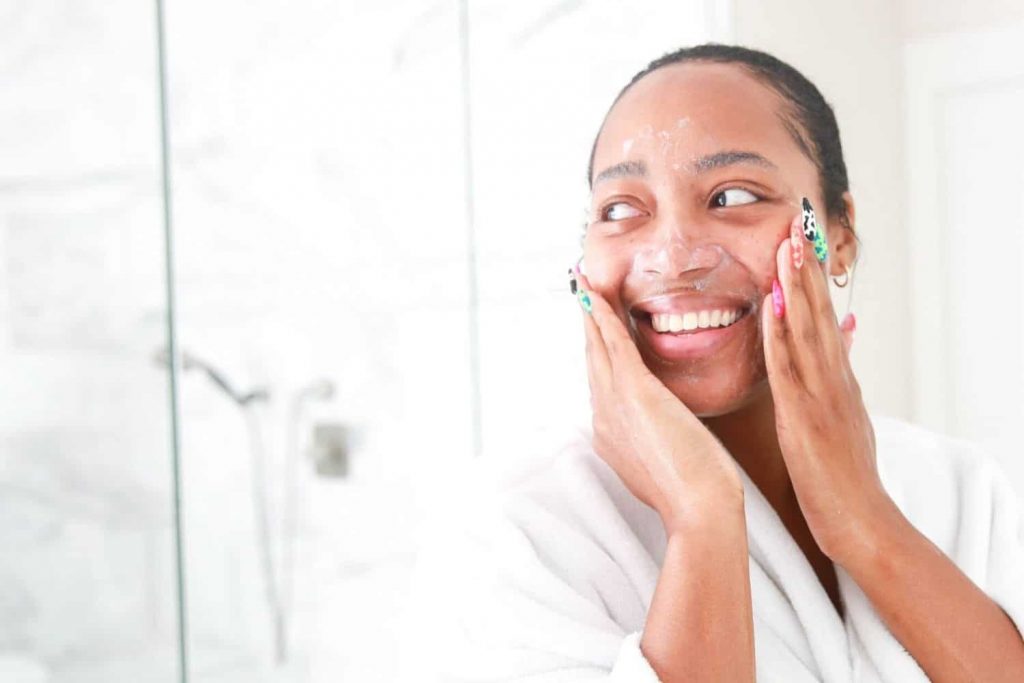
Yes, you can use salicylic acid and glycolic acid together without issue. In fact, many products on the market contain both AHA and BHA and give incredible results. If you’re wanting to target a range of skin concerns or just want to simplify your skincare routine, look for products with both salicylic and glycolic acid.
How Do I Use Glycolic Acid And Salicylic Acid?
Wanting to know how to use glycolic acid and salicylic acid together in your skincare routine? Exactly where do these goods fit into your regimen? It all depends on the sort of product you’re using. AHA and PHA chemicals can make your skin more sensitive to sunlight, so apply them at night. BHA chemicals, on the other hand, may be used in either the morning or evening.
Where you use them in your routine all depends on the kind of product again. In general, you should apply skincare products in layers according to their thickness. That is, whatever has the thinnest consistency goes first, followed by the second thickest, and so on.
Here’s an example routine for clarification:
Cleanser > AHA Toner > BHA Serum > Hydrating Serum > Moisturizer
Can I Use Glycolic Acid and Salicylic Acid At The Same Time?
Yes, you can use AHA and BHA at the same time, one right after another. Many products on the market contain a blend of AHA and BHA, so it’s perfectly safe to use both. However, do be careful if you are new to chemical exfoliants! Be sure to hydrate and moisturize your skin properly and don’t overdo it!
Glycolic Acid Vs Salicylic Acid Vs Hyaluronic Acid
Since there are so many different acids in skincare, it’s easy to get them confused. Although it may sound like it, hyaluronic acid is not an exfoliant. It’s a hydrating ingredient that can hold onto water, which plumps and hydrates skin. There’s no exfoliation when you use hyaluronic acid, but it can help acne in another way!
How Often To Use AHA and BHA Products
So, how often should you be using an AHA or BHA product? It all depends on your skin. If you have never used a chemical exfoliant before, plan to start off slow by only using it once or twice a week. Then gradually increase to 3-4x a week. Many people can use chemical exfoliants everyday, while others can only use them a couple times a week.
When it comes to chemical exfoliants, your skin will tell you if it can handle a certain type of product. If redness or irritation occurs after use, stop using the product and get your skin calmed down before introducing it back into your routine.
Best BHA Products
Looking for a good salicylic acid product to target oily skin, acne and pores? Check out these BHA’s that will help clear up your skin in no time.
Paula’s Choice Skin Perfecting 2% BHA
This best-selling, cult-favorite BHA is one you cannot pass up. A formula that’s gentle enough for daily use on all skin types. Removes dead skin cells while unclogging pores for a smoother, blemish-free complexion. This one will also help with fine lines and wrinkles, redness, inflammation and give a more even-toned and radiant complexion. It also has green tea extract to reduce redness even more, calm skin and irritation. Who doesn’t want that?
Naturium BHA Liquid Exfoliant 2%
This exfoliating liquid has salicylic acid and an advanced bioactive fruit blend to slough off dead skin cells, while keeping skin hydrated. The microencapsulated actives work gently to effectively remove the old surface layers of your face without stripping, even when you use this product everyday! Glycerin is added to draw moisture into the skin to keep it plump and hydrated.
Hanskin Pore Cleansing Balm BHA
This deep cleansing balm instantly melts stubborn makeup and pore impurities. Beta hydroxy acids (BHA) such as salicylic acid help gently dissolve oil and unclog pores, which helps pores appear smaller. The formula removes excess oil but won’t leave skin feeling stripped or dry. Orange peel oil and Eucalyptus extract help keep skin hydrated, balanced and glowing all day long.
Benton Aloe BHA Skin Toner
Soothing aloe and anti-inflammatory salicylic acid are packed into this toner to help the absorption of other skincare products in your routine and gently exfoliate skin to unclog pores and keep acne away. It’s great for all skin types thanks to snail mucin which helps to soothe, nourish and calm sensitive or dry skin.
CosRX Blackhead Power Liquid
This cult-favorite BHA contains Willow Bark Water which controls oil and calms the look of redness while Betaine Salicylate fights bacteria, decongests clogged pores, brightens skin, improves appearance of pores. Gently exfoliates dead skin cells without irritating the skin to refine look enlarged pores that help keep them clear from impurities for all types especially oily acne-prone ones.
Herbivore Botanicals Blue Tansy Invisible Pores Resurfacing Clarity Mask
Wanted: a radiant complexion that glows?You found it! Blue Tansy will bring out the natural, healthy glow of your skin by exfoliating dead skin and brightening tone for a radiant glow. Willow Bark (BHA), along with fruit acids clarify and exfoliate skin, revealing smoother, brighter skin as soon as you wash this mask off. Blue Tansy Oil soothes skin, irritation and reduces redness for a calm complexion that glows.
Best AHA Products
Wanting to dive into chemical exfoliants to fade hyperpigmentation, even skin tone and prevent aging? These glycolic acid products will give your skin a radiant glow.
KraveBeauty Kale-Lalu-yAHA
You’ll be glowing in no time when you add KaleLalu YAHA to the mix. Clarifying glycolic acid exfoliates dead skin cells and smoothes away pesky pores, with antioxidants like kale, spinach, and parsley for an extra nutrient boost. Hyaluronic acid and aloe plump skin with calming moisture without irritation.
Paula’s Choice Advanced Smoothing Treatment 10% AHA
If there’s anything Paula’s Choice knows how to do, it’s chemical exfoliants. And as one of their best-selling products, this AHA treatment packs a serious punch against all types of skin concerns. Alpha-hydroxy acids clear congested pores while evening out discoloration for smoother looking skin, revealing younger looking skin. A combination of glycolic acid and other AHA’s renew skin with just one use. Peptides and ceramides strengthen skin and amp up the anti-aging factor. Plus tons of anti-oxidants, this is ageless skin in a bottle.
The Inkey List Apple Cider Vinegar Acid Peel
This innovative chemical peel is perfect for people who want powerful brightening and exfoliation without irritation. A potent mix of antioxidant rich apple cider vinegar helps to smooth your skin, minimizing breakouts and acne scars while evenly reducing the appearance of pores. Combined with a powerful yet gentle formula of glycolic and fruit acids, you’ll get beautiful results in just one use!
Good Molecules Glycolic Exfoliating Toner
With 3.5% glycolic acid, this is a gentle toner suitable for even the most sensitive skin types. You’ll have a more even tone and smoother texture in no time! Galactomyces ferment also ensures an improved moisture barrier so your skin stays hydrated throughout the day while aloe helps calm any irritation or inflammation before it sets in.
Summer Fridays Soft Reset AHA Exfoliating Solution
In just one night, this powerful 3-in-1 treatment exfoliates and brightens your skin. It also reduces the appearance of pores by including lactic acid in its formulation. With 16% AHAs, promotes skin cell turnover remove dead skin cells from the surface of your face for a brighter complexion!
A blend of two AHA’s, glycolic and lactic acid, give this exfoliant some incredible hydrating abilities – which is important when using a strong exfoliant! These two will retexturize your skin – less wrinkles, smaller pores, plumper skin, smoother skin texture and more. Niacinamide also helps to control oil production, fade hyperpigmentation and reduce pore size. Hyaluronic acid, aloe and tons of fruit extract soothe and hydrate skin to avoid overexfoliation and a compromised skin barrier.
Best Salicylic Acid and Glycolic Acid Products
Wanting the best of both worlds to target an array of skincare concerns? Here the best combination products with both glycolic acid and salicylic acid.
Good Molecules Overnight Exfoliating Treatment
Reveal glowing, radiant skin with the power of AHAs! Good Molecules Overnight Exfoliating Treatment is designed to help exfoliate your complexion overnight while you sleep. Its 10% blend of alpha and beta hydroxy acids helps unclog pores while smoothing away dead cells. Wake up to smooth, hydrated skin that’s ready for makeup or just a pretty glow.
COSRX AHA/BHA Clarifying Treatment Toner
A two-in-one toner and exfoliant, this gentle AHA/BHA product is perfect for sensitive skin types. 0.1% of AHA Glycolic Acid and BHA Betaine Salicylate smooth skin texture, unclog pores, brighten skin and so much more. Mineral water provides soothing hydration that sensitive skin needs, especially when using chemical exfoliants.
The Ordinary AHA 30% + BHA 2% Peeling Solution
If you haven’t heard of this peeling solution from The Ordinary, you must live under a rock. This has become one of the most popular skincare products of all time. This intense peel will dramatically smooth skin and brighten tone with just one use. With 30% AHA and 2% BHA, it’s a powerful peel that’s perfect for stubborn acne and scarring. This peel also contains Tasmanian Pepperberry which helps to reduce irritation.
Murad AHA/BHA Exfoliating Cleanser
The cleanser is a triple threat with the exfoliating effects of salicylic, lactic and glycolic acids to reveal softer skin and helps to prevent acne, fade hyperpigmentation and reduce fine lines over time. It also contains jojoba beads that help polish away dry patches for younger-looking skin.
Peter Thomas Roth Goodbye Acne™ AHA/BHA Acne Clearing Gel Face Body Spot Treatment
This gel helps visibly reduce acne, pore size and future blackheads thanks to 2% salicylic acid. It also reduces the appearance of uneven skin tone with glycolic acid, licorice extract and arnica flower extracts. Aloe vera soothes skin and helps reduce redness associated with active acne breakouts and post breakout marks. Not only does this gel help with acne, but it also fades stubborn acne scarring.
Farmacy Honeymoon Glow
Get that queen-worthy “I woke up like this” glow with this award-winning night serum, a 3-in-1 AHA resurfacing night serum. The 14% AHA/BHA/flower acid blend exfoliates and clarifies skin while reducing the appearance of fine lines, wrinkles and pores.
An AHA blend of glycolic, lactic and citric acids exfoliate dead skin cells overnight so you wake up with smoother, softer, more glowing skin. The powerful blend helps to fade hyperpigmentation quickly while the BHA unclogs pores, reduces blackheads and pore size. Plus the extra exfoliation action from the flower acids, this is an incredibly powerful serum that will deliver results overnight. And with all that exfoliation going on, you’ve got to keep skin hydrated and soothed. This serum does just that with hyaluronic acid to plump skin with moisture and a proprietary blend of honey to moisturize and soothe.
Tips For Using Glycolic & Salicylic Acid
- Glycolic Acid can increase photosensitivity, so it’s best to use sunscreen (even if its cloudy) whenever using glycolic acid
- Glycolic Acid should also be used at night because it increases sensitivity to the sun
- Whether you use glycolic acid or salicylic acid, or both, chemical exfoliants can cause redness, irritation, flaking, dry skin so it’s best to incorporate these slowly into your routine
Salicylic Acid Vs Glycolic Acid Wrap Up
Salicylic acid is most often used for oily skin types, whereas Glycolic Acid are better suited to dryer skin types. Salicylic acid has a higher concentration of anti-inflammatory properties and can be effective at treating acne breakouts by reducing oil production on the surface of the skin. On the other hand, glycolic acids have been shown to stimulate collagen production in addition to providing exfoliation benefits that lead to smoother texture and tone over time.
Salicylic acid or glycolic acid: which do you prefer? I love a combo product that way you get all the benefits! Using salicylic acid and glycolic acid together are incredible – you’ll see dramatic improvements in your skin!
Salicylic Acid Vs Glycolic Acid Comparison
Salicylic Acid (BHA)
- regulates oil production
- treats and prevents acne
- unclogs pores
- works at a deeper level than AHA’s
- reduces blackheads & sebaceous filaments
- reduces redness associated with breakouts
- reduces inflammation in the skin from acne
Glycolic Acid (AHA)
- fades hyperpigmentation (acne scars, sunspots)
- brightens skin tone
- smooths skin texture
- diminishes fine lines and wrinkles
- stimulates collagen (anti-aging)
- firms and plumps skin
- reduces acne
- works on the surface of the skin
Related To Salicylic Acid Vs Glycolic Acid
- AHA vs BHA vs PHA: What’s The Difference?
- Facial Oil Comparison: Rosehip Oil or Marula Oil?
- The Battle Between Aquaphor & Vaseline For Skin
- Best The Ordinary Products For Acne Scarring
- Micellar Water Or Toner: Which Should You Use?
- What Should You Use After The Ordinary Peeling Solution
